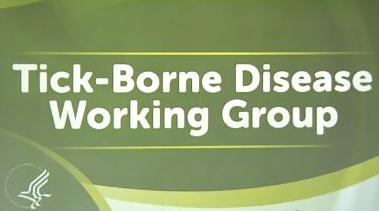LYMEPOLICYWONK: What I told TBDWG about “two standards of care” for Lyme disease

I was selected to give verbal comments at today’s federal Tick-Borne Disease Working Group meeting. Here’s what I told them:
There is considerable uncertainty in the diagnosis and treatment of Lyme disease — particularly persistent Lyme disease. Most patients know that they should be told the risks and benefits of the different diagnostic and treatment options available and allowed to determine the best approach in collaboration with their physician for individualized care.
This process is called shared medical decision making and is most often used when science is uncertain and trade-offs exist between the benefits and risks as well as the quality of life consequences of different treatment approaches. Think prostate cancer, where patients and their physicians choose between watchful waiting, radiation therapy, hormone therapy and surgery.
Government agencies, including the FDA, the Institute of Medicine, PCORI, and Medicare support shared medical decision making. LymeDisease.org believes that it is essential for Lyme disease.
Current diagnostic testing for Lyme disease cannot distinguish between active infection and cure. The NIH has funded only three treatment studies for persistent Lyme disease—the last over 15 years ago. This poor evidence base leaves doctors and patients uncertain about the best way to diagnose and treat the disease.
Out of this uncertainty, healthcare professionals use two medically recognized standards of care for diagnosis and treatment. Both are reflected in peer-reviewed published guidelines—one by the International Lyme and Associated Diseases Society and the other by the Infectious Diseases Society of America. The ILADS guidelines adhere to the recommendation of the Institute of Medicine and follow the rigorous GRADE evidence assessment standards —which also embrace shared decision making.
The main difference between the IDSA and ILADS guidelines is that –in the face of scientific uncertainty–the ILADS guidelines defer to clinical judgment and shared medical decision-making in the context of providing individualized care. While the IDSA guidelines severely restrict the use of clinical judgment and leave patients without treatment options when short term therapy fails–as it does in far too many cases. Less than 10% of patients with persistent Lyme disease choose to be treated under IDSA protocols.
Accordingly, LymeDisease.org urges that the working group report recommend:
- THAT Government agencies provide unbiased information regarding both standards of care;
- THAT Physicians inform patients about the risks and benefits of different treatment options in the context of shared medical decision making and individualized care, AND
- THAT Insurance reimbursement be available for treatment under either standard of care.
Today’s patients cannot wait for tomorrow’s research! Please see my submitted written comments for more information. Thank you for your time.
Click here to read my entire comments: LBJohnson, TBDWG written comments.
Click here for a copy of Informed-consent-for-Lyme-treatment
Lorraine Johnson, JD, MBA, is the Chief Executive Officer of LymeDisease.org. You can contact her at lbjohnson@lymedisease.org. On Twitter, follow her @lymepolicywonk. If you have not signed up for our patient-centered big data project, MyLymeData, please register now.





















We invite you to comment on our Facebook page.
Visit LymeDisease.org Facebook Page